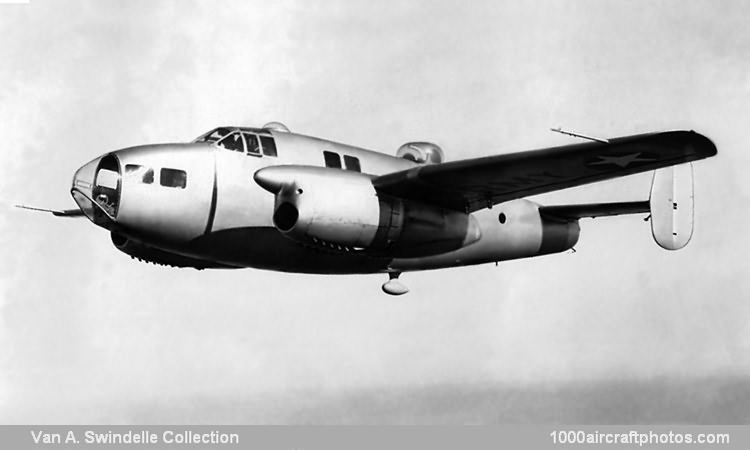07/31/2011. Remarks by Johan Visschedijk: "The introduction of gun turrets on a large scale in combat aircraft brought with it the need to provide adequate air-to-air gunnery training and practice. When the US entered WW II, no specialized gunnery schools existed (by 1944 there were seven) and contracts had been placed by the Army for only two prototypes of a specialized trainer which was to become the first specifically produced for use in these schools. These two prototypes were nicknamed "Yankee Doodle"
The first of these prototypes, the Fairchild Model 77 XAT-13 Coordinator (s/n 41-19500) which flew for the first time on July 19, 1942, was designed as a bomber crew trainer, with provision for training all members of a medium bomber crew. It carried a flexibly-mounted nose gun and a second 0.30 in (7.62 mm) gun in a dorsal power turret, and had a small fuselage bomb-bay. Training stations could be provided for a bombardier, navigator, gunner and radio operator, as well as a pilot and instructor.
Powered by 600 hp Pratt & Whitney R-1340-AN-1 Wasp radial engines, the XAT-13 featured Duramold plastic-bonded plywood in its construction. The similar Model 77R XAT-14 (s/n 41-19503) was flown for the first time on November 25, 1942, powered by 520 hp Ranger V-770-6 twelve-cylinder air-cooled inverted V-engines. It was later converted into the XAT-14A bombardier trainer with nose-gun and turret removed.
In 1942, the same basic type was ordered into production as a gunnery trainer, with a two-gun dorsal turret and a single nose gun, and no bomb-bay. In this guise it was designated by Fairchild as the Model 80 and by the USAAF as AT-21 Gunner; it was powered by 520 hp Ranger V-770-11 or V-770-15 engines.
By the time production ended in October 1944, The Fairchild Engine & Airplane Corporation had built one AT-21-FA (s/n 42-11679) at Hagerstown, Maryland and 105 AT-21-FB (s/n 42-11680 to 42-11753, 41-76615 to 42-76645) at Burlington, North Carolina.
Two additional production lines were laid down in 1942 to meet the then urgent demand for a trainer of this type. Bellanca Aircraft Corporation, built 39 AT-21-BL (s/n 42-48052 to 42-48090) at New Castle, Delaware, and McDonnell built a further 30 at their St. Louis, Missouri plant. Projected production on a much larger scale was cancelled.
AT-21s served at several of the specialized gunnery schools but were eventually replaced by training versions of the operational aircraft on which the gunners were to serve. Many of the AT-21s were then relegated to target-tow duties."
